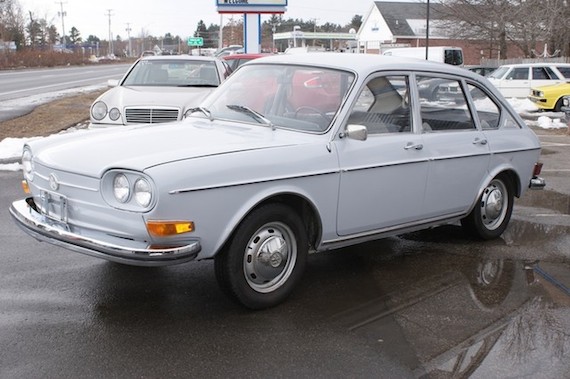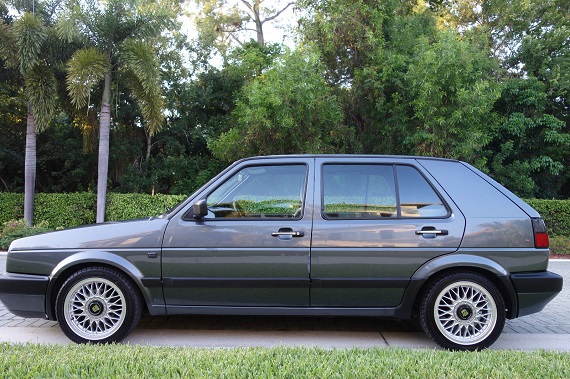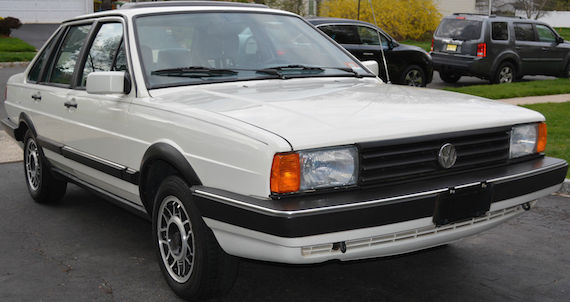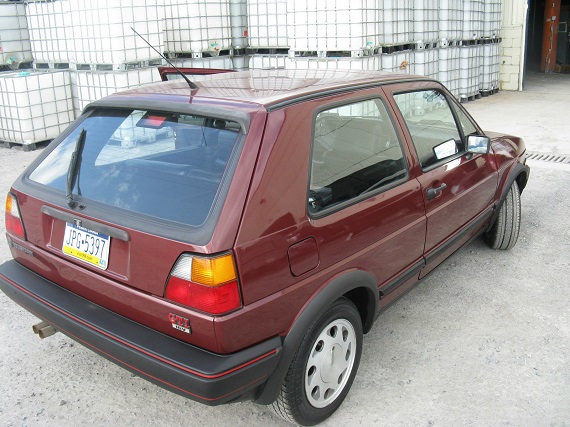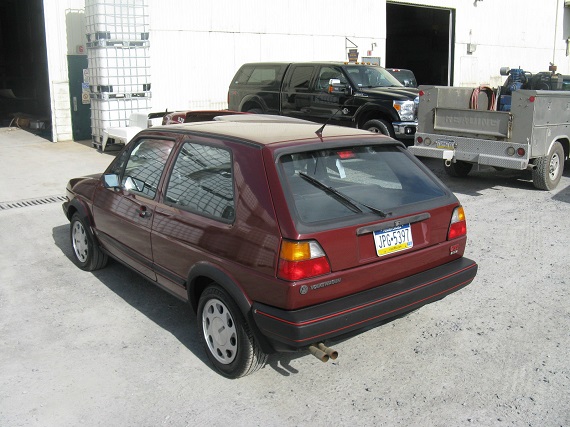The Jetta GLI has always been a object of desire for me. While the GLI really gained fame with the Mk2 generation, it was a final-year offering on the excellent first-gen sedan, bringing most of the GTI goodies to the 3-box setup. This red example has been with the same owner for the last 15 years and is looking pretty darn good on BBS 3-piece rims with what look to be like-new Euro bumpers and front lip. The interior also looks outstanding for being over 30 years old, but a few blemishes inside and out keep this from being a perfect package. A small rust spot, mismatched tires, and paint issues on the roof are all fixable but indicate the projects will continue.
Tag: Volkswagen
It seemed that Volkswagen was undergoing a bit of an identity crisis in the late 1960s and early 1970s. With the perennial Beetle getting a bit long in the tooth, VW was seeking a way to go from strength to strength in the sales race with a new model. How to go about that, however, was anything but clear. The Type 4, or 411 as it was known, was VW’s largest passenger car so far, available in a two or four door form with a fastback style or as a 3-door Variant. Just over 100,000 of these 411s were sold in a four year span in the US. That’s far from a sales flop but pales in comparison to the almighty Beetle. By 1974, the Passat, or Dasher as it was known in the US, would arrive on the scene and thus would begin the slow march towards the end of air-cooled engine production.
It’s rare to spot a 411 on the roads these days in any kind of condition, but this one for sale in New Hampshire has escaped the ravages of New England winters and Father Time. Rarely do you see one this good come up for sale.
CLICK FOR DETAILS: 1971 Volkswagen 411 on eBay
Comments closedI wonder when the Mk.2 market is really going to blow up. For some time, it’s been the A1 models and Sciroccos that have really drawn the big money. Of course, on the other side the Mk.2 market is bookended by the Corrado market, which has always been quite hot. But the 1985-1992 Golf was a very popular platform; I had one, my friends had them, and we drove them hard and turned them up. They were European style on the cheap, versatile and economic hatches that were fun to drive, reasonably reliable and just different enough from the norm to make you feel special. But today, 23 years after the Mk.2 left U.S. shores, there are precious few left in good original shape. I don’t think that the Golf was ever intended to be a collector car, mind you – but then, neither was the original Mk.1 Golf, and those have certainly proven their staying power. However, in Europe, the Mk.2 crowd is – if anything – much stronger than it was in the U.S., and since Volkswagen sold more of the later models in Europe and they’re now becoming import legal, it seems appropriately time that these models start sneaking over to these shores, primed to take advantage of a surging 1980s market:
CLICK FOR DETAILS: 1990 Volkswagen Golf GL on eBay
1 CommentThe low mileage 1987 Volkswagen Quantum GL5 we featured earlier this month is back on offer. Like the Polo we saw on our Facebook page the other day, this is a great way to get maximum VW rarity for minimal money.
CLICK FOR DETAILS: 1987 Volkswagen Quantum GL5 on eBay
1 Comment1987 saw some serious upgrades for the original “Hot Hatch” GTi. Externally, you’d have to be a seriously devoted Volkswagen fan to pick them all out. The body and trim remained effectively the same as they had been in 1985 and 1986, but new “Teardrop” alloys replaced the leftover “Snowflake” (also known as “Avus”) and “Bottlecap” (also known as “Montreal”) wheels that had adorned the earlier models. Squint closely at the front, and a new deeper chin spoiler sat under the bumper with two brake ducts. The GTi sported a new spiky hairdo as well, with a new roof-mounted Fuba antenna which would become signature for the model going forward. But the change that enthusiasts really liked was under the hood, where eight more valves made their appearance on the venerable 1.8 mill that had powered the GTi. That new motor was announced on every side of the car with new “16V” badges adorning the front, rear and side trim. Horsepower increase was relatively modest – about 13 more horsepower over the high-compression 8V that the car ran in 1985 and 1986. But the letters DOHC were magical pixie dust for wannabe racers in the 1980s, and the entered you into the coolest club out there – Club Twin Cam. Everything sprouted Twin Cams in the 1980s, but it brought the GTi up a notch in performance to compete with the new crop of Hot Hatches it had helped to sprout. 0-60 was now achieved in under 8 seconds – a serious feat for an economy car at that time. The new 16V GTis would be available – as before – in only four colors; Diamond Silver Metallic, Dark Blue Mica, signature Tornado Red or my favorite, Red Pearl Mica (LE3P) that this low mileage example is shown in:

